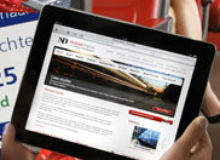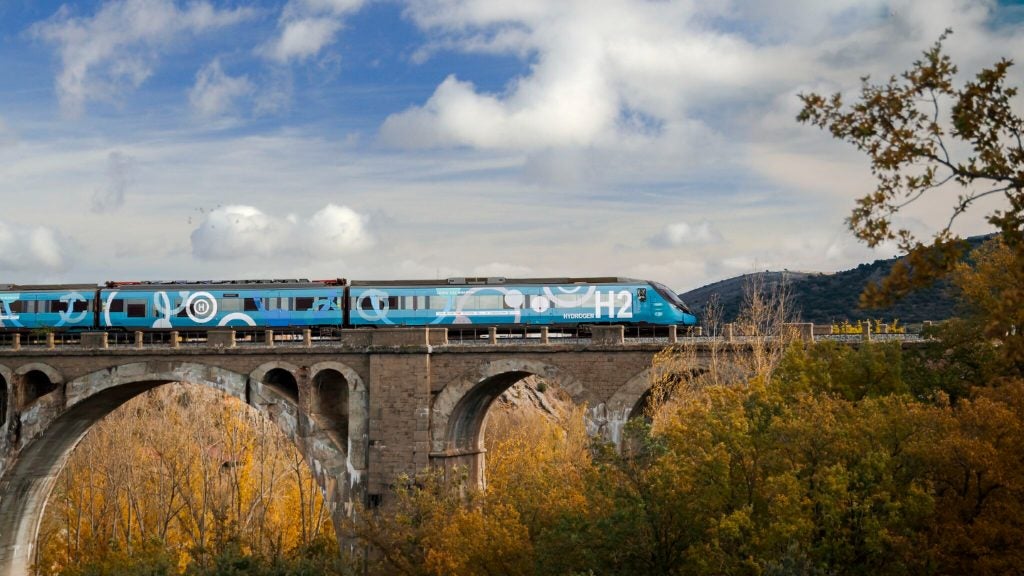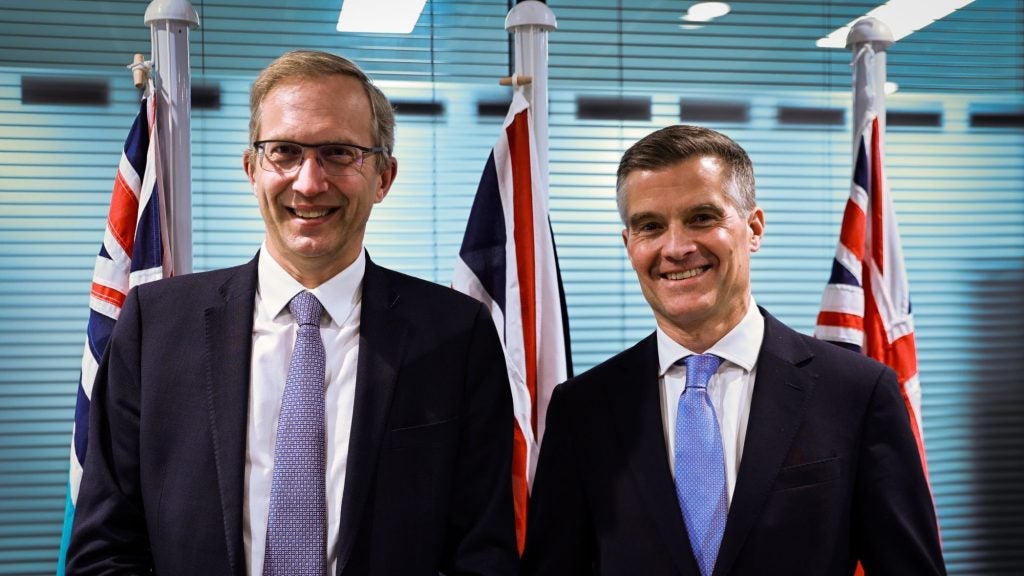

Jay Saw is commercial director at Nomad Digital, the leading global provider of high-availability communication solutions to the transport sector. As well as overseeing Nomad’s strategic business development and marketing operations, he manages the integration of the Nomad Tech joint venture with EMEF and Portuguese rail operator CP. Prior to joining Nomad in 2007, Saw devised
T-Mobile’s mobile data, 3G and Wi-Fi strategies, and led the development of T-Mobile HotSpot.
Julian Turner: Please describe the evolution of Nomad Digital.
Jay Saw: Nomad Digital started out providing passenger Wi-Fi by establishing a robust, high-availability, high-bandwidth communication link from the train to the shore.
This required us to build a local area network (LAN) onboard, and as the idea of networking up vehicles and components took off the company began to develop a range of ICT expertise in the rail environment and built up its skills base by bringing in people with specific experience in rail engineering.
Nomad now provides over 60% of all contracted passenger internet vehicles on trains worldwide. Internet access is still the number one service demanded by rail users and operators appreciate that they have to move into the 21st century and meet the demands of the iPhone generation.
How well do you really know your competitors?
Access the most comprehensive Company Profiles on the market, powered by GlobalData. Save hours of research. Gain competitive edge.

Thank you!
Your download email will arrive shortly
Not ready to buy yet? Download a free sample
We are confident about the unique quality of our Company Profiles. However, we want you to make the most beneficial decision for your business, so we offer a free sample that you can download by submitting the below form
By GlobalDataSee Also:
However, our business has evolved and we now supply a common communications platform, one that connects not just passengers but also the operational systems that sit onboard transit vehicles.
This single communications channel can be used for passenger information and internet services, and also to provide visibility on the status of equipment. Some projects we deliver now are entirely driven by ‘Telemanagement’ solutions such as condition-based monitoring (CBM).
JT: What specific advantages do integrated communications and wireless connectivity offer rail operators and passengers compared with traditional platforms?
JS: Historically, rail vehicles would be dispatched in the morning and return at the end of the day, and the only way the depot knew where they were was by looking at very basic block diagram system; operators had little or no understanding of how the fleet was performing while they were out in service.
Now, connected, intelligent fleets offer real-time insight into how trains behave while in service and there is a vast amount of operational data available to rail companies, allowing them to carry out repairs and replacements when they are needed and not simply based on a mileage limit.
There are many different flavours of connectivity and we try to impress on customers that they need to develop a much greater understanding of what they are trying to achieve for both passenger and operational solutions.
JT: Please describe some of the recent fleet connectivity projects that Nomad has worked on.
JS: Nomad’s recent collaboration with Dutch rail operator NS was the largest deployment of passenger internet ever undertaken in a single project. Retrofitting the operator’s entire fleet of 365 vehicles meant installing passenger information displays on several different fleet types.
We provided a complete onboard passenger information solution that integrates with the central NS scheduling system, extracts data and sends it to the trains, allowing each one to personalise specific traveller connection information on large displays in each rail car.
We also report the data from the train back to the centre, so it’s very much a real-time view. This is also integrated into the Wi-Fi service, so passengers can access journey information via a portal on their smartphone or tablet device, so the information is at their fingertips.
The service is by far the largest when measured in sessions – the term used to describe a passenger connecting to the internet during a journey – with four million users logging on in just one month on NS alone; a staggering amount.
Another significant customer was Queensland Rail where we deployed real-time CCTV solutions on its fleet. Nomad took its legacy CCTV system and upgraded it into a connective state. QR can now tap into any train and receive a live CCTV feed remotely, which has consequently led to a fall in crime.
We have also won a major contract for the Intercity Express Programme (IEP) for Hitachi Rail Europe to provide the common communications platform for the new UK intercity rail fleet.
JT: How does Nomad adhere to international standards governing rail communication technology?
JS: The European Rail Agency (ERA) and the EU Rail interoperability Directive aim to harmonise how national rail fleets work, but there are still a lot of elements that go on-board rail vehicles in each country that are controlled and regulated entirely on a national basis – just because one train manufacturer claims something is interoperable, that doesn’t always mean it will work with another fleet.
There is a large base of legacy equipment deployed in the market today in terms of different systems, different suppliers and different ways of acquiring data, and so it’s not simply a case of plugging and playing new technology – there is a lot of harmonisation work that still needs to be done, and in the meantime deploying solutions that work across multiple platforms such as Nomad Tech’s CBM solutions.
Nomad focuses on the non-safety-critical space of onboard ICT on trains and the definition of that varies from country to country. In the US something may not be classed as safety critical, whereas in another country it will – even in Europe there is a significant variation between markets.
Our philosophy is to provide a single common communication platform connecting up all on-board systems. We do not input into safety critical systems, but can implement ‘read-only’ solution for data extraction, such as system status which enable a remote view of non-safety-critical environments as well as sharing data with older systems- it’s about building intelligence for the operator.
JT: How does upgrading the wireless connectivity of trains help operators to improve vehicle availability and remotely manage their fleets more efficiently?
JS: This is a new area and one that we are particularly excited about. Nomad recently formed Nomad Tech, a joint venture (JV) with Portuguese rail maintenance company EMEF, which taps into a largely under-addressed part of the rail market, namely connecting up to systems in real time, extracting and analysing data, and then actually providing advice and intelligence back to the operator.
Rail vehicles have an on-train monitoring recorder (OTMR) system that observes and records certain onboard systems. Real value is being able to take all those ones and zeros and interpret and analyse that data on the fly and in real time to advise operations of the critical information. We can also tap into systems that aren’t being recorded by the OTMR such as doors, toilets and air-conditioning units, all of which are areas of significant failure over the life cycle of the train and cause a significant headache for operators. Predicting when these will fail, this avoiding in-service failures.
We can also provide physical interfaces into legacy rail equipment, monitor what normal behaviour should look like and raise flags about an impending failure before it happens. Things rarely happen catastrophically – there is usually a warning sign beforehand. The key is cut through the noise and extract that nugget of information.
Portuguese rail operator CP and EMEF have now moved some of their fleets to these CBM systems, which are based on an airline methodology and are still very new to the rail industry. They require operators to change maintenance depot work processes and one of the services that Nomad Tech provides is consultancy, as well as computerised maintenance management system (CMMS) integration.
We can feed information about the state of train equipment into an operator’s CMMS and provide a 360° view of the process – it’s a fully integrated view of train maintenance that saves considerable amounts of money on operational costs.
JT: What are the challenges of installing wireless connectivity solutions on high-speed trains?
JS: Over the last few years we have debunked the myth that cellular technology doesn’t work at high speeds and advancements in 4G cellular technology have come along in leaps and bounds.
We developed an acceleration technology called Charger that has added a lot of capability to the broadband speed we’re able to achieve on high-velocity trains. We proved that it could work at speeds up to 400mph and the technology is already being deployed by Eurostar.
JT: How do you envisage integrated rail communications evolving in the near future?
JS: Captive portals – digital platforms through which rail passengers access on-board internet services – are rapidly evolving as operators get wise to the fact that this is a valuable interface through which they can interact with their customers.
Previously, a passenger was someone who bought a ticket but then was completely anonymous; now, you can find out a lot more about them and tailor content accordingly. We have just won a contract working for the Polish rail operator PKP; in collaboration with T-Mobile Poland, where our system will to offer passengers up to 40 movies and other premium content.
As cellular technology advances, the business case for long distance routes is beginning to look a lot stronger and we are talking to other European high-speed operators who are ready to press the button now.
Other areas include connected passenger counting, which offers a real-time view of passengers loading onto a rail vehicle. Fast forward a few years – in fact, some of our customers are already looking at doing this – and commuters will have a real-time view of what the availability of seating is in a certain carriage before it enters the station, allowing them to align themselves on the platform to ensure they get a seat.
Follow Julian Turner on Google+







